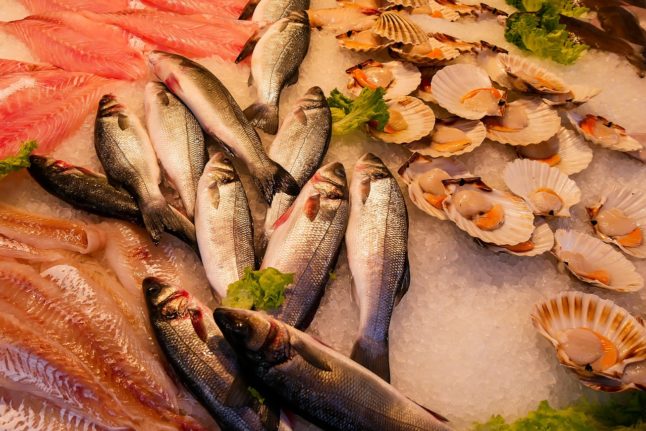Most Spanish regions have at least one traditional fish dish or seafood dish, even the ones that are not located along the coast. In fact, to follow a Mediterranean diet, it’s recommended to eat fish at least two or three times a week, however, the latest data shows that during the first two months of 2023, fish consumption fell by 20 percent.
Many believe that this is due to inflation and the historic rise in food prices in Spain, which has affected the entire weekly shop but has had one of the greatest impacts on the cost of fish.
Fish prices have risen 14 percent within the last year, meaning that families can no longer afford the types of meals they once ate, causing consumption of one of Spain’s much-loved products to decrease by a whopping 20 percent.
READ ALSO: Food prices in Spain rise 16 percent despite VAT cut
According to data from Spain’s National Statistics Institute (INE) published on March 14th, inflation has had the most pressure on the price of the weekly shop and food become more expensive by 16.6 percent in the last year. The Organisation of Consumers and Users (OCU) has estimated that this translates into an extra annual cost of €924.
Many families are now saying that cans of tuna are the only type of fish that they can afford and that it is now considered a luxury product for special occasions only.
READ ALSO – Cost of living: What are Spain’s best price comparison websites?
When the reduction in VAT on food was announced in December 2022, fish was excluded from the list. The 4 percent VAT for staple foods, such as bread, milk, flour, cheese, eggs, fruit, vegetables, legumes, potatoes and cereals, was abolished and the government also cut VAT on oil and pasta 10 to 5 percent for six months.
But now, merchants are asking that the government reduce the VAT on fish to 4 percent as well.
Meat consumption is another important part of the Spanish diet, which favourite dishes and tapas such as jamón, paella Valenciana and cocido.
The consumption of fresh meat fell by 2.5 percent in the first month of the year, according to data presented by NielsenIQ at the 23rd Aecoc Congress of Meat Products.
Many Spaniards are choosing to switch to frozen meat instead, saying that they can save around €3 to €4 by not buying it fresh.
The Minister of Agriculture, Fisheries, Food and the Environment of Spain, Luis Planas, however, does not believe that the drop in the consumption of meat and fish is due to high prices.
According to him, it is due to a trend of consuming a more vegetarian diet instead. Planas claimed it was not necessary to lower VAT on meat and fish. The drop in meat and fish consumption is due to a “consumption trend” rather than the price factor he explained, referring to the annual report on food trends carried out by the ministry.



 Please whitelist us to continue reading.
Please whitelist us to continue reading.
Member comments